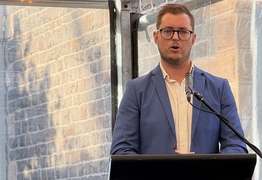Kiama Council shifts gear on DAs as state delays exposed
Lynne Strong
21 April 2025, 8:00 AM
 For years, councils have worn the blame for sluggish DA processing.
For years, councils have worn the blame for sluggish DA processing. New league tables have confirmed what local councils have long argued: they’re not the only ones slowing down development applications.
For years, councils have worn the blame for sluggish DA processing.
Now, fresh transparency from the NSW Government is helping set the record straight, and Kiama Municipal Council is using it to make practical changes.
Published league tables now hold 22 state agencies accountable for the time they take to respond during the process.
For the first time, both state and council data can be viewed side by side.
“It’s a fairer picture,” said a spokesperson for Kiama Council, which has already made a series of internal improvements that are reflected in its latest rankings.
Those improvements include better monitoring of DA timeframes and upcoming community consultation on a revised Development Assessment Policy.
The new policy will clarify when Council will request more information from applicants and when it will simply refuse incomplete DAs.
It’s a shift prompted by new ministerial expectations, which ask councils to stop carrying weak applications.
Kiama’s Planning and Development team is also preparing for future reforms, even though the much-hyped mid-rise and TOD pathways haven’t landed locally yet.
So far, no such applications have been lodged in the Kiama LGA, likely due to market constraints and the challenge of assembling infill lots.
But Council says real collaboration with state agencies remains limited.
Although councils must refer to state departments during the DA process, all communication must go through the NSW Planning Portal.
This restricts real-time discussion. Instead, Kiama is pushing for earlier cooperation through strategic work like the Local Housing Strategy.
It is also calling on the state to release similar performance data for infrastructure and essential services approvals, often a hidden source of delay for developers and homeowners.
The new approach, Council says, is not just about process.
It is about shifting the relationship from blame to partnership.
“Councils are the first sphere of government and the closest to the people we serve,” said LGNSW Vice President, Mayor Claire Pontin.
With league tables on both sides now live, the pressure and the opportunity to work together is finally clear.
NEWS




